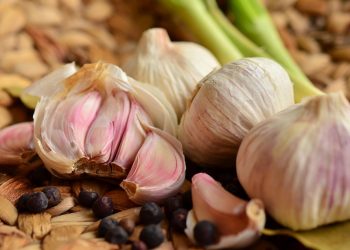Contents
5 Natural Remedies for Joint Pain Using Turmeric and Pepper
Did you know that millions of people worldwide suffer from joint pain? Whether it’s due to arthritis, injuries, or just the wear and tear of aging, joint pain can be debilitating. While over-the-counter medications can provide some relief, many are turning to natural remedies. Among these, turmeric and black pepper have gained significant attention. Let’s explore five effective natural remedies that utilize these powerful ingredients to alleviate joint pain.
The Power of Turmeric and Black Pepper
Before diving into the remedies, let’s get to know our star ingredients. Turmeric, a bright yellow spice often used in curries, contains curcumin, a compound known for its anti-inflammatory properties. Black pepper, on the other hand, contains piperine, which enhances the absorption of curcumin by up to 2,000%. This means that combining these two not only makes them more effective but also creates a powerhouse duo for combating inflammation and pain.
1. Turmeric and Black Pepper Tea
Why It Works:
Drinking tea made from turmeric and black pepper is one of the simplest ways to incorporate these ingredients into your daily routine. The warm liquid can soothe your joints, while the curcumin and piperine work their magic.
How to Make It:
- Boil 2 cups of water.
- Add 1 teaspoon of turmeric and a pinch of black pepper.
- Let it steep for about 10 minutes.
- Strain and enjoy, optionally adding honey or lemon for flavor.
Pros:
- Easy to make and drink.
- Can be consumed daily.
- Provides hydration along with anti-inflammatory benefits.
Cons:
- The taste may not be appealing to everyone.
- Overconsumption might lead to digestive discomfort.
2. Turmeric Paste for Joint Massage
Why It Works:
Applying turmeric paste directly to the skin can provide localized relief from joint pain. The anti-inflammatory properties of curcumin can penetrate the skin and help reduce swelling.
How to Make It:
- Mix 2 tablespoons of turmeric powder with enough coconut oil or olive oil to form a paste.
- Add a pinch of black pepper to enhance absorption.
- Apply the paste to the affected joints and leave it on for 30 minutes before rinsing off.
Pros:
- Targeted relief for specific areas.
- Can be soothing and relaxing.
Cons:
- May stain the skin temporarily.
- Not suitable for open wounds or sensitive skin.
3. Turmeric and Black Pepper Capsules
Why It Works:
For those who find it difficult to incorporate turmeric and black pepper into their diets, capsules can be a convenient alternative. They provide a concentrated dose of curcumin and piperine.
How to Use:
- Look for high-quality supplements that list curcumin and piperine on the label.
- Follow the dosage instructions provided on the packaging or consult with a healthcare provider.
Pros:
- Easy to take and store.
- No preparation required.
Cons:
- Quality can vary between brands.
- May not provide the same holistic benefits as whole foods.
4. Turmeric and Black Pepper Smoothie
Why It Works:
Adding turmeric and black pepper to a smoothie not only enhances its nutritional profile but also makes it a delicious treat. The antioxidants from fruits and vegetables combined with curcumin and piperine can fight inflammation from multiple angles.
How to Make It:
- Blend 1 banana, 1 cup of spinach, 1 teaspoon of turmeric, a pinch of black pepper, and 1 cup of almond milk.
- You can also add other fruits like berries or mango for added flavor.
Pros:
- Delicious and nutritious.
- A great way to sneak in more vegetables.
Cons:
- May not be filling enough as a meal replacement.
- Some may dislike the earthy taste of turmeric.
5. Turmeric-Infused Oil for Cooking
Why It Works:
Using turmeric-infused oil in your cooking can help you benefit from its anti-inflammatory properties while enjoying your meals. The healthy fats from the oil can also improve the absorption of curcumin.
How to Make It:
- Heat 1 cup of olive oil over low heat.
- Add a few tablespoons of turmeric and a pinch of black pepper.
- Let it simmer for 30 minutes, then strain and store in a bottle.
Pros:
- Adds flavor to dishes.
- Easy way to incorporate turmeric into your diet.
Cons:
- High in calories if used in excess.
- Requires cooking time and preparation.
FAQs
1. How often can I use turmeric and black pepper for joint pain?
You can incorporate turmeric and black pepper into your daily routine in various forms—tea, capsules, or foods. However, moderation is key, and it’s best to consult with a healthcare provider for personalized advice.
2. Are there any side effects associated with turmeric and black pepper?
While generally safe, excessive consumption can lead to digestive issues, such as bloating or diarrhea. Additionally, turmeric may interact with certain medications, so it’s essential to consult a healthcare provider if you’re on medication.
3. Can I use turmeric and black pepper if I’m pregnant?
While turmeric is safe in culinary amounts, high doses or supplements are not recommended during pregnancy. Always consult with a healthcare provider before making any dietary changes.
4. Is there scientific evidence supporting the use of turmeric for joint pain?
Yes, several studies have shown that curcumin can reduce inflammation and pain associated with arthritis and other joint issues. For instance, a study published in Journal of Medicinal Food found that curcumin was effective in reducing symptoms of osteoarthritis (Panahi et al., 2016).
Conclusion
Incorporating turmeric and black pepper into your daily routine can be a simple yet effective way to manage joint pain. Whether you prefer sipping tea, blending smoothies, or cooking with infused oils, these natural remedies offer a multitude of options.
However, remember that while these remedies can provide relief, they’re not a substitute for professional medical advice. Always consult with a healthcare provider to tailor a treatment plan that suits your individual needs.
So go ahead, experiment with these remedies, and see what works best for you. After all, finding natural ways to alleviate discomfort can be a game-changer in your journey toward better health and well-being.
This article is for educational purposes only and is not a substitute for professional medical advice. Always consult a qualified healthcare provider before making changes to your health routine.
References
-
Panahi, Y., Badeli, R., Karami, F., & Sahebkar, A. (2016). Curcumin: A novel therapeutic agent in the management of osteoarthritis. Journal of Medicinal Food, 19(2), 112-118. https://doi.org/10.1089/jmf.2015.3594
-
Mayo Clinic. (n.d.). Arthritis. Retrieved from https://www.mayoclinic.org/diseases-conditions/arthritis/symptoms-causes/syc-20361038
-
National Institutes of Health. (n.d.). Turmeric. Retrieved from https://nccih.nih.gov/health/turmeric
-
Harvard Health Publishing. (2020). The health benefits of turmeric. Retrieved from https://www.health.harvard.edu/staying-healthy/the-health-benefits-of-turmeric
Get Your FREE Natural Health Guide!
Subscribe now and receive our exclusive ebook packed with natural health tips, practical wellness advice, and easy lifestyle changes — delivered straight to your inbox.














